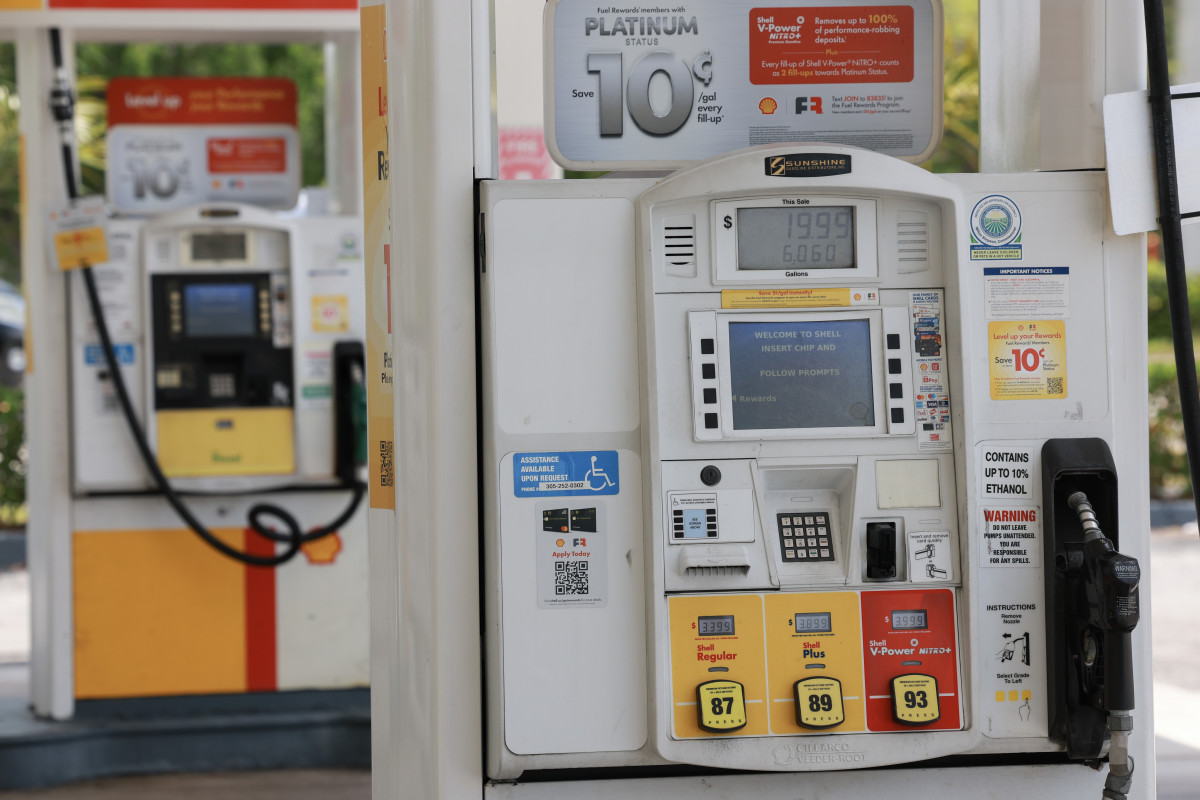
As many Americans will never forget, on June 14, 2022, the national average price of a gallon of gasoline peaked at $5.02.
Statewide average prices were slightly lower in states with big energy industries and low taxes, like Texas. Texas's 2022 high was $4.70, reached June 15, 2022.
But California's statewide average price soared to a shocking $6.44, according to data from the American Automobile Association.
Related: Buckle up! More market excitement is coming
In 2023, the national average peaked at $3.88 a gallon on Sept. 18. That was up 21% on the year. Prices started to drop, however, and that price gain was gone at year-end.
AAA's peak average this year was $3.68 a gallon, up 18% on the year and reached on April 19.
But on Aug. 12, the average was down to $3.44 per gallon, a decline of 23.6 cents, or 6.42%, from the April high. It's also down 40.3 cents a gallon, or 10.4%, from Aug. 12, 2023.
This year's gas prices started to move higher on the assumption that oil and gasoline consumption in the U.S. would rise. But spring and summer demand hasn't been as great as expected, and economies elsewhere, like China, have also seen slower growth.

Gas prices should keep falling — maybe
Given the current trend, the safe assumption is that prices will continue to decline, as they usually do, into the end of the year. That's due partly to motorists driving less in the fall, and oil companies use cheaper ingredients to make the gasoline.
The cycle should start up again in early 2025.
But the federal Energy Information Agency says crude oil will move higher in the fall, with Brent, the benchmark global oil, hovering between $85 and $90 per 42-gallon barrel in the fourth quarter of 2024. If that occurs, gasoline prices may move higher from current levels. The EIA hasn't offered a guess on 2025 yet.
What may push oil prices higher are the tensions brewing in the Middle East. Israel is readying its defenses. Iran is reportedly making war plans.
Covid taketh away and then giveth
If conventional wisdom proves correct, gas prices in 2025 will peak in June, dip a little in the summer, and rebound once more before falling into New Year's.
The evidence says don't bet on the conventional wisdom. Here are the AAA peak prices and their dates since 2020.
- 2020: $2.60, on Jan. 9.
- 2021: $3.422, on Nov. 8.
- 2022: $5.016, on June 14.
- 2023: $3.881, on Sept. 18.
- 2024: $3.679, on April 19.
The 2020 peak price occurred as early as it did because the Covid-19 pandemic erupted. Driving as we know it pretty much ended early in the year and didn't start to recover until 2021.
More on the economy and markets
- Recession predictions reset after market scare
- What Happens When the Oversold Rally Ends?
- Expedia stock price targets get reset by analysts after CEO sounds alarm
The 2022 peak was driven by three factors:
- The postpandemic reopening, which overwhelmed everything.
- The Russia-Ukraine War.
- The bid by members of the Organization of Petroleum Exporting Countries to jack up crude-oil prices as much as they could.
West Texas Intermediate, the benchmark U.S. crude, peaked at $122.11 a barrel on June 8, 2022.
It settled Friday at $76.84 a barrel, up 16% this year. Crude prices were higher late Sunday and Monday.
Energy stocks have mostly struggled for gains in 2024.
The Energy Select SPDR exchange-traded fund (XLE) is up just 6.6% this year, compared with the S&P 500's 12.4% gain. Chevron (CVX) is down 2.8%. ExxonMobil (XOM) shares are having a good year, up 18.8%
Related: Veteran fund manager sees world of pain coming for stocks







